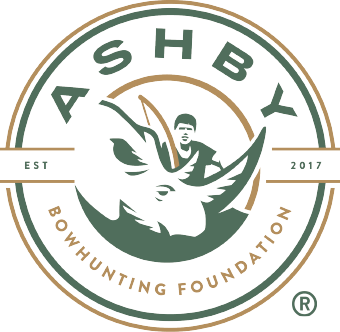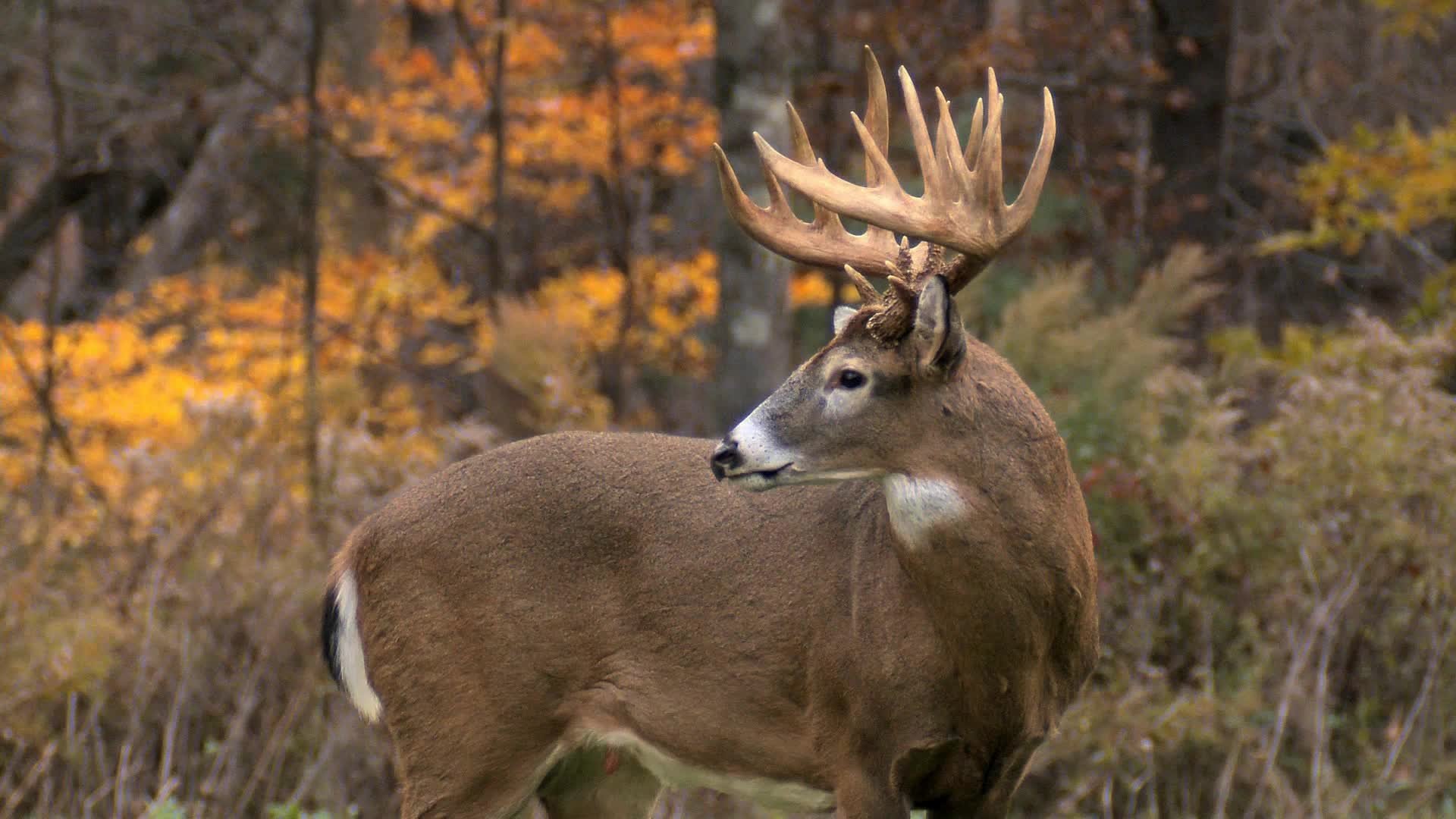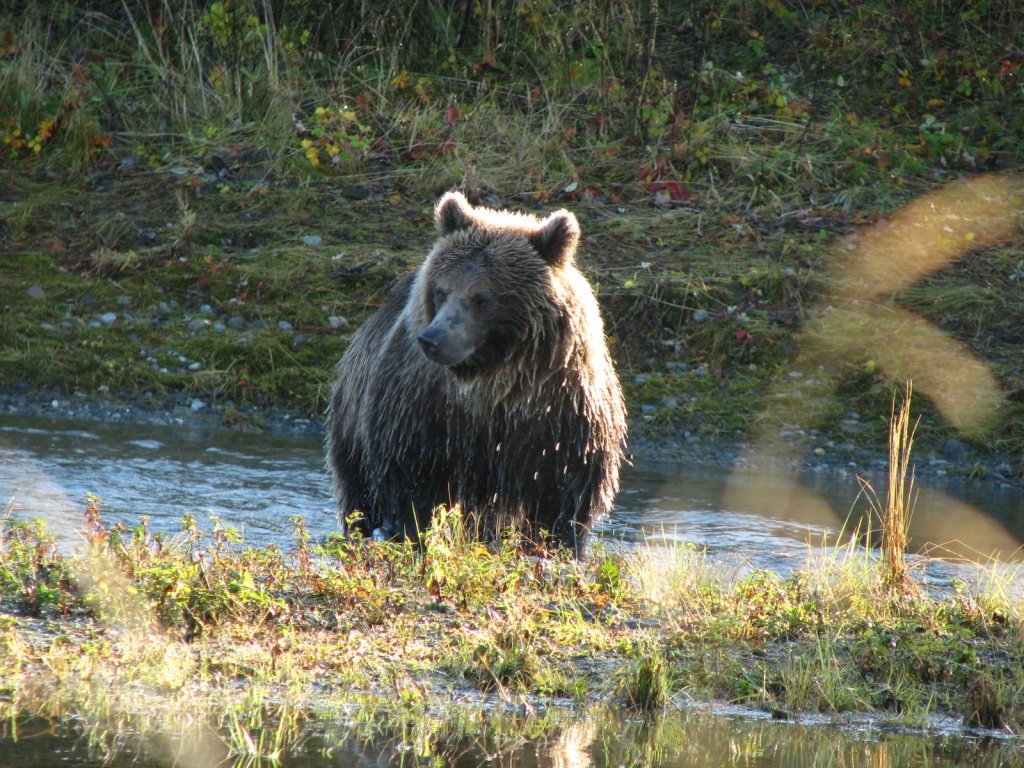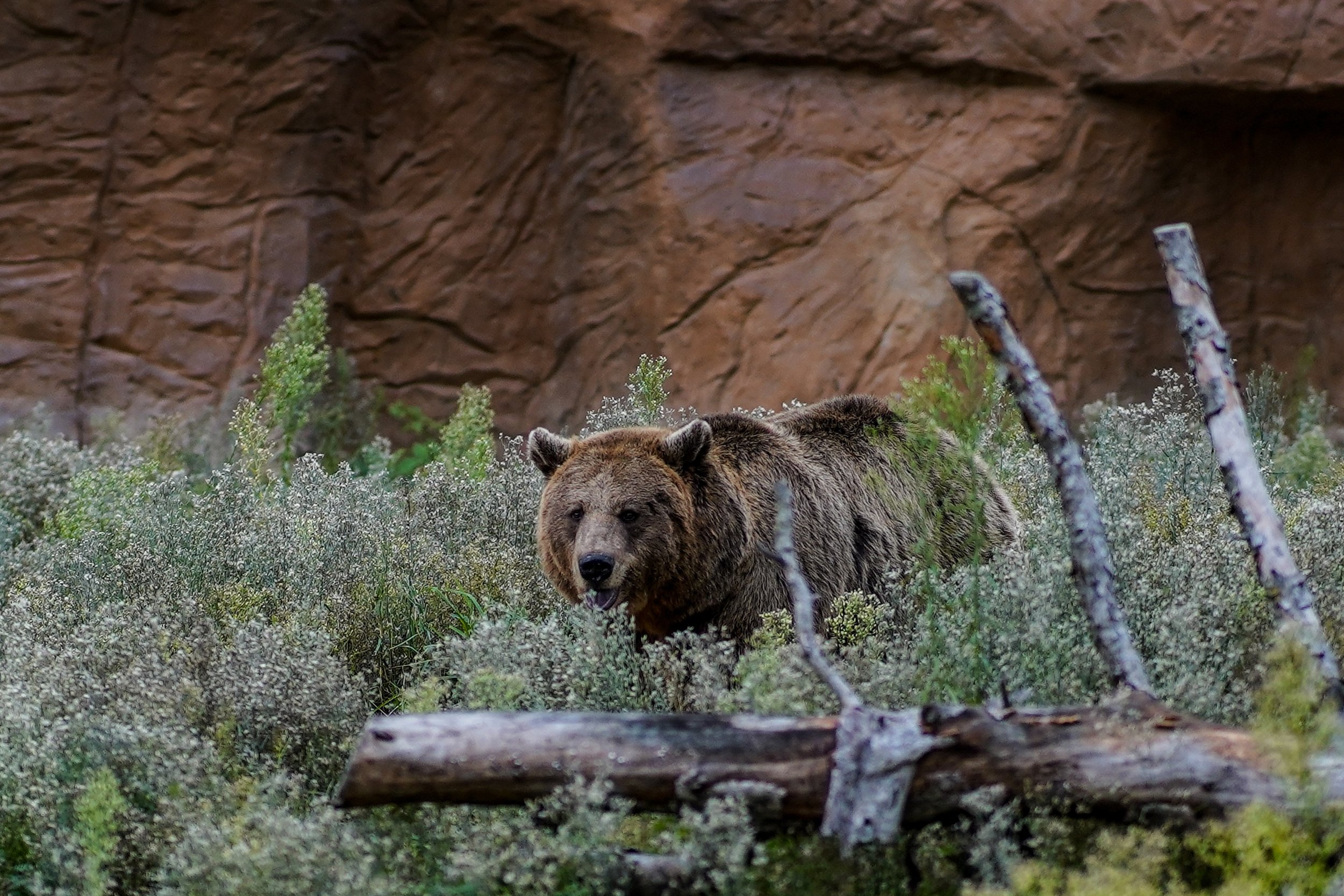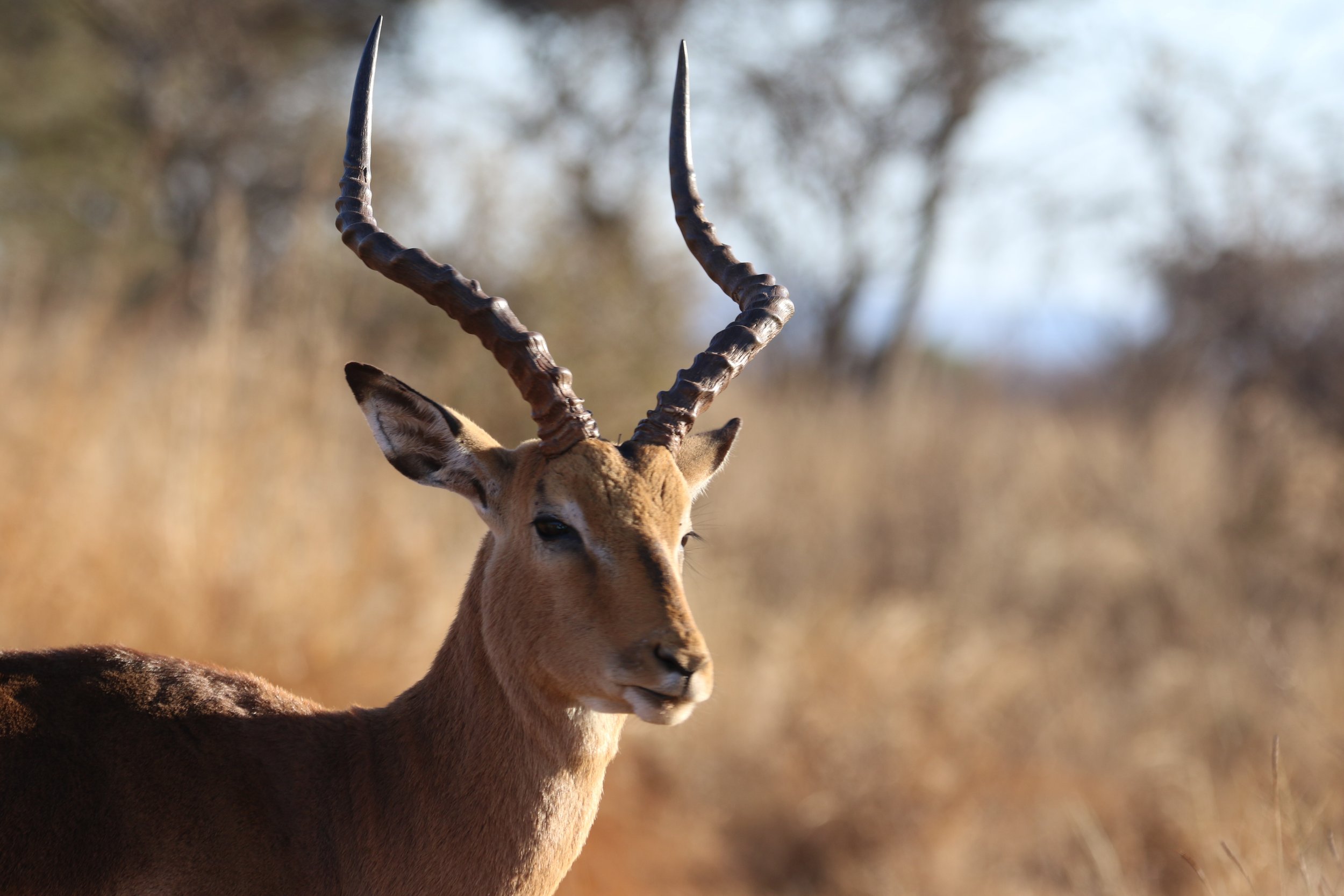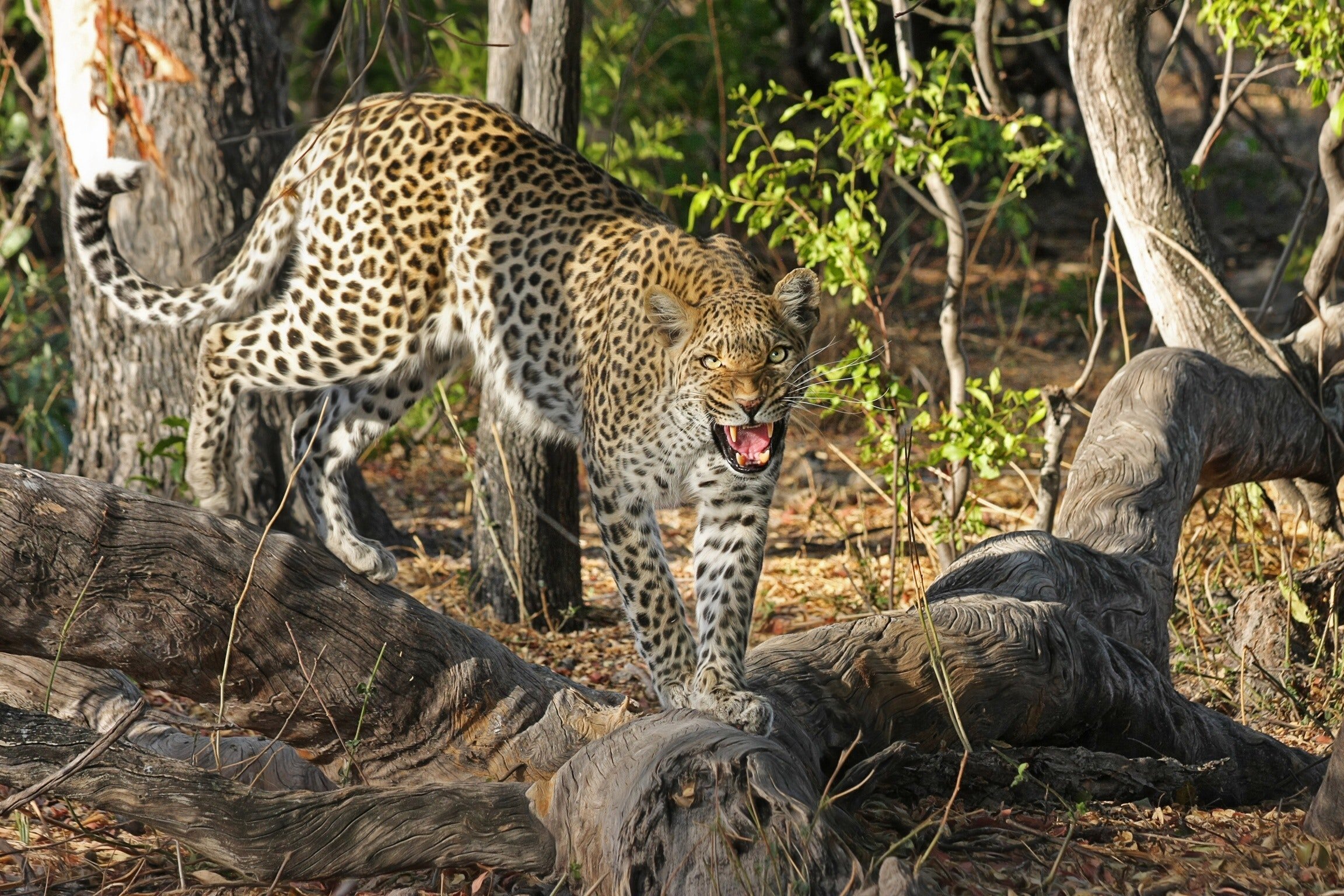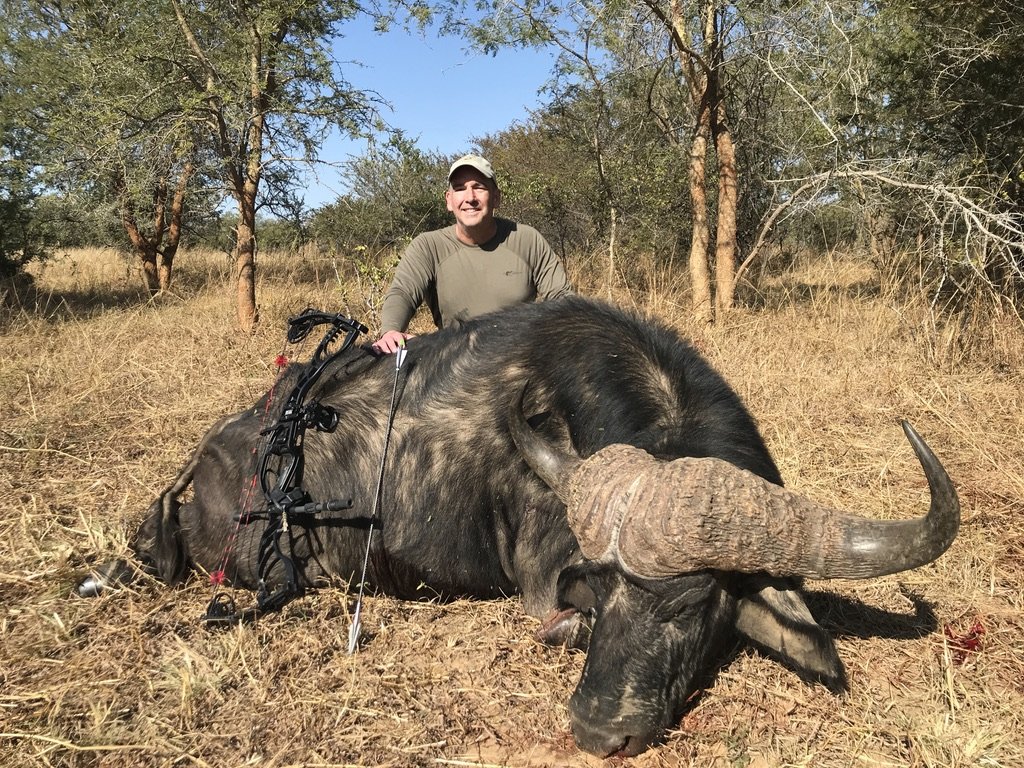Blonde-phased black bear taking advantage of the green grass and forbs at a remote mountain spring in Colorado. From April through August black bears consume 5,000 - 8,000 calories per day. Beginning in September the bears enter a hyperphagia period, eating 20 hours per day and consuming 15,000 - 20,000 calories per day.
Ashby Bowhunting Foundation Newsletter
May 2025
President’s Message
While at the THEIA (Texas Hunter Education Instructors Association) Conference on May 3, we presented our Maximizing Arrow and Broadhead Terminal Performance Seminar to Hunter Ed Instructors which lasted close to four hours. It was an honor to be recognized at the conference by Texas Parks & Wildlife Department as the Bowhunter Education Instructor of the Year. This was truly a team effort by the Board of Directors who also volunteer their time to help keep ABF moving forward and this honor would not have been possible without them. Bob Barnette has also been recognized by TPWD with this same honor for his countless hours of work through Texas Wildlife Association. We are all very grateful that Texas Parks and Wildlife Department embraces these empirical findings and sees the ripple effect ABF is having with the multitudes of bowhunters that come through this workshop not only across Texas, but around the globe.
Good hunting and as always, have a nice day.
Rob Neilson
Donations
The Ashby Bowhunting Foundation is a 501 (c) (3) education and research organization. 100% of your donation will go to the Missions of Ashby Bowhunting Foundation. No salaries are paid by the Foundation. We realize there are many worthwhile organizations out there, and greatly appreciate your consideration and support.
Newsletter Tip
Stump shooting is by far the best practice for bowhunting. Every shot is new. That is critical to mimic an actual field situation. Shooting in dense timber, across draws, steep uphill and downhill will let you know in a hurry what your ethical shot distance is. For me, I’m comfortable if I can shoot my longbow within a four inch circle of my target up to twenty yards. Stump shooting with a friend, to keep you honest, is helpful. And for the compound shooters, if you’re worried about breaking arrows, use a Rinehart 18-1 Broadhead Target. Enjoy the challenge of every shot being unique, just like hunting. Here’s a great video about stump shooting. We owe it to the quarry we hunt to know the ethical distance we can make a clean kill. Stump shooting will tell you the truth about that distance.
Events
Coming Soon: Online workshops on Maximizing Arrow and Broadhead Terminal Performance. These will be limited to 15 people for each workshop and the same material we cover for Texas Parks & Wildlife Department Hunter Ed Instructors.
AMOS - Association of Mozambique Safari Operators
AMOS contacted ABF as they are attempting to legalize bowhunting dangerous game in Mozambique. We have provided them the same information we have provided PHASA several years ago. Additionally, we agreed to discuss the information in detail not only with AMOS, but also in conjunction with their head of Parks at ANAC that will be reviewing the information.
WhatsApp Community
If you utilize WhatsApp, ABF has a site inside the Longoria-Hosmer Hunting and Conservation Community. As our readers know, 100% of donations into ABF go to furthering the missions of ABF. The same holds true with the Longoria-Hosmer Foundation where hunters directly support the wilderness and wildlife conservation efforts of the @longoriahosmerfoundation, a 501c3 nonprofit that empowers wildlife and wilderness conservation around the globe. The links are here:
Longoria-Hosmer Hunting and Conservation Community: Open this link to join my WhatsApp Community: https://chat.whatsapp.com/I22hsy6aEZ8BHPbklkvwQg
Ashby Bowhunting Foundation: Open this link to join my WhatsApp Group: https://chat.whatsapp.com/JAs760BctAK8E644dXG1m9
We hope the subscribers of our newsletter will join this one-of-a-kind community. Of course, common sense rules apply…stupid posts will get you kicked out without notice.
Bowhunter Interview - Pierre Favier
Zimbabwe, 1988: Tsessebe. Common tsessebe are among the fastest antelopes in Africa and can run at speeds up to 90 km/h.
How long have you been a bowhunter?
In 1965, I was sent to Bamako ( Mali ) as a « cooperant » instead of a military service. I was immediately fascinated by Africa, and quite naturally I came to hunting as the best way to discover its fantastic fauna, at first of course with a gun. Then I shot my first elephant in Haute Volta, now called Burkina Fasso, and quite a lot of buffaloes!
Of course I was definitely in love with Africa, so after such experience, instead of looking for a job in France, I made all my professionnal career through several african countries, mostly west Africa, ( Senegal, Burkina, Cameroon, Comores, Tchad, Congo, Ivory coast…) spending all my free time after all kind of big game, still with the rifle.
It’s in Gabon, 1978, that I made friends with Michel, a nice guy who strangely was hunting with huge « Howard Hill » longbows. He made me discover the fantastic books of famous american legends of the bow, Saxton & Pope, Fred Bear, Bob Swinehart and Howard Hill, of course… I was fascinated, of course I wanted to know more.
My friend gave me a wonderful chance : Together we had a hunt in North Cameroon. I was still using my good old 375 HH, but Michel wanted his first buffalo with his longbows. Huge bows ! Ninety and one hundred pounds! He sincerely thought that to kill cleanly a buffalo, you needed a very heavy bow. I was not an athlete, such bows were far beyond my reach… but I was anxious to see how it worked.
Hunting a different way, we had two tracking groups. My side, I saw a lot of buffaloes, I easily killed one, and a few antelopes… but poor Michel never had a chance : In fact, as he had no gun, his trackers didn’t believe he could kill a buffalo with that kind of a stick, they were terrified, and very carefull not to find any herd! Meanwhile, every day my trackers were bringing me to buffs, but after killing one, to their despair I didn’t want another one… But it gave me an idea : Suppose I had a bow… Could I come close enough for a shot ? So each time we found buffs, leaning my rifle on a ant hill, I tried to stalk, hands in my pockets. Something new for me, difficult but exciting, this way I had great fun. When close enough, ten to fifteen meters, twice I threw a stone at the next buffalo, then all the herd was running away in a cloud of dust! Great sport… Of course my trackers thought I was totally crazy, but I was delighted, saying to myself : So, why couldn’t I do the same a bow in hand?
After this hunt I decided to try the bow seriously. Quickly it became not only my favorite, but my only hunting way. Of course, especially later on my zimbabwean ranch, I was also using a riffle when necessary, as a tool, for defense or for meat, but I was not calling it hunting. When I was hunting, it was with my bow.
I had my last ( unsuccessfull ! ) hunt after Caffer Caffer three years ago, in 2022. Now being eighty two and somehow rusted, unfortunately I’m getting too old, as the way I’ve always hunted, that is stalking, is extremely physical and far beyond my capacities. So I was a ( happy ) bowhunter for 43 years.
Do you hunt with traditional equipment, compound, crossbow, or a combination of these?
After this buffalo hunt, I bought a bow as soon I was back in Port-Gentil, Gabon. Not a longbow of course. At this time I thought that to kill big game safely you needed at least eighty pounds. As I could not comfortably handle such a heavy longbow, I choosed a compound, the let-out making it much easier. This first hunting bow was a York compound. Then I began to practice almost every day in the bush behind my house.
Some time later, as I was handling my bow decently, I had with my friend Michel a fantastic experience : As soon as we had a long week-end, a helicopter was dropping us far away on some lost clearing, in the deep middle of the gabonese virgin forest. Without any firearm, just bows! There we were among ( too close sometimes! ) a lot of wild animals, situtungas, pigs, forest elephants, forest buffaloes and even gorillas! We had a few narrow escapes, but we didn’t shoot anything big. Just pigs and duikers. But it was probably the most exciting hunting experience I ever had.
My first big game with this bow, in 1980, was a forest buffalo, at « La Lopé », in the deep heart of Gabon. I killed it with just one 2117 Gamegetter arrow, armed with a Howard Hill broadhead. This was the beginning of a nice serie of bowhunts, in Gabon, Cameroon, Tchad… Unfortunately this bow was lost in an airport on my way to a bowhunt in Namibia.
Then I bought a Oneida Black Eagle compound. I love this bow, as it is half a recurve, half a compound. No cable in the way. As far as I know, it’s the only compound bow that you can shoot instinctively, the way I like.
And my settings are as simple as possible :
No artificial arrow-rest : Just a piece of antelope skin, the arrow gliding on a smooth carpet of hair. Natural release with a glove. No aiming pin : I’m shooting instinctively, both eyes open.
I am strongly convinced that when you are in the bush the simplest is the best. At the worst moment some piece of too sophisticated equipment can break and make you miss… or give you a perfect excuse to have missed !
I have used this Oneida all my bowhunting life.
What is/are your favorite animal(s) to hunt?
Zimbabwe, 1988: Impala
First of all, I must say that I am not a trophy collector. I’m not anxious to hang another head on the wall. What I’m looking for is the difficulty and the quality of a hunt. Not the trophy. Many bowhunts can end without a kill and be wonderfull all the same.
As game, for my first bowhunts I liked pigs. That is, in Africa, warthogs and wild pigs. Because they were plenty, funny, not too difficult to stalk. A perfect training for a beginer.
Then I came to antelopes. For example the impala is very exciting. Very seldom you’ll find just one, rather a herd, with a lot of eyes and noses. You must be a very good stalker to come close enough for a shot at the alpha male.
Kudus and sable can be fantastic trophies, but the big males stay often alone, making the approach much easier.
But my favorite big game is certainly the buffalo.
As I spent most of my life in West Africa, I could get a pretty good knowledge of the « aequinoxalis » buffalo, smaller than the big « Cape », but very wild, clever, sometimes dangerous. I had already shot quite a lot of them with the riffle. After switching to the bow I made a few tries on them, without a kill, unfortunately. Which does not mean they were bad hunts : I remember a lot of difficult trackings and breath taking stalks… It’s funny, most of the best memories I’m keeping of my hunts ended without a trophy!
I was happier with the small ( but very cheeky! ) gabonese forest buffalo, one of my most difficult, but best successes.
And my friend Doctor Ed made me dream of the australian waterbuffalo. Thanks to his precious advices, I had two hunts after this impressive game ( For their very tough skins, he compares them to rhinos and elephants! ) One of my hunts was successfull, but both were extremely exciting.
I love all kinds of buffalo.
What is/are your favorite bowhunting method(s): stands, still hunting, spot and stalk, pure stalking, or other?
Definitely still hunting and stalking.
I consider stands and blinds as not real hunting. I saw so many game ranches who purchase from some game auction the trophy you have paid for. They carefully let him a few days in a paddock without water, and release him as you are waiting in a blind, overlooking the pool from twenty meters … You have just to raise your weapon, bow or riffle, and shoot… « Well done sir, nice shot! »
Ok, you get « your » trophy, but do you deserve it? And where is the fun?
The hunt must be, as Howard Hill said : « The hard way »!
Tracking and stalking an animal whose senses are much more accurate than yours can be a fantastic achievement. It makes you a feel real predator, it makes hunting a fair match.
Stalking, feeling the wind on your cheek, walking without cracking a twig, melting in the bush, freezing like a stone as soon as the deer lifts the head, without setting your foot down, can be extremely difficult and physical. It needs hard training, but it works ! Before trying it, I could not belive how close you can come to a wild animal, so close that you can count the fies on his muzzle!
Then it’s up to you : You can shoot or not, take him or not. How many times I just raised my cap to say : « Sorry chap, you’ve lost! »
What event(s) brought you to use Ashby-style arrow setups and could you describe your typical arrow setup(s) for hunting big game?
When I met dear Old Derelict, I had already a few years of bowhunting behind me. I had learnt a few things, and I was delighted to see how my own experience was similar to Ed’s.
Zimbabwe: Hunting group with Dr. Ed Ashby, front left.
For instance I was never shooting before being very close, to make sure it will be a kill. If I remember well, Ed says somewhere that his average shooting distance was around sixteen meters! I can’t remember any of my own shots over 25 meters.
Second I was already convinced that the most important is penetration!
But to get perfect penetration, Ed taught me that you don’t need very heavy weight : Some buffaloes were cleanly killed by only fifty, even forty five pounds bows. What you need is proper heads and heavy arrows. So I stopped battling to draw huge weights.
To achieve good penetration I was already using single blade broadheads, but he made me change my Howard Hills ( good ones, but the ferule can break ) to the single bevel Grizzlys, then the Kodiaks, similar but much stronger .
I had noticed that heavy arrows give you better penetration. Ok, I had shot my first buff with a 2117 Gamegetter with my Howard Hill broadhead, around five hundred grains, and yes it killed it ; but this species of buffalo is quite small, around 300-400 kgs only. Such an arrow would be far too light for a big buff, a Cape or a water buffalo.
Ed widely confirmed what I suspected, and he made me discover the importance of the FOC for penetration. So when I went to Australia for the waterbuffalo I had stuffed the head of my 2219 Gammegetter arrows with a piece of round iron. So I was increasing both the weight (950 gr including the Kodiak head) and the FOC of my arrows.
On the waterbuffalo it worked perfectly : My Black Eagle Oneida was set at seventy pounds. Shot from 15 meters, my first arrow transfixed his muscular right shoulder and penetrated the lungs, my second one, shot from18 meters after the buff had turned around on his tracks, penetrated the left scapula, went across the chest, such as I found my broadhead protruding outside the right shoulder! The buffalo was dead whithin twenty seconds.
Thanks Ed!
Overall, what has been your experience using Ashby-style arrow setups?
Bowhunting in Cameroon, on the Gulf of Guinea in central Africa.
Dr Ashby and me were neighbours as I was living on Moreena ranch, Zimbabwe. I was making my living breeding ostriches, and besides, benevolently I was the Conservator of the Midlands Black Rhino Conservancy Trust. ( When I left in 2001, we had 59 black rhinos ! ) Like most of the Midlands ranches, we were also organizing what is called Plains Game hunting ( all African game, zebra, sable, kudu, impala… excepted the famous Big Five ). Ed lived in Kwekwe, the next small town, we met and quickly made friends. And as I had decided to organize bowhunts on our ranch, quite naturally we had the opportunity to work together. His experience was priceless for our clients.
Later on, although we had to leave Zimbabwe, our dear ostriches and rhinos, Ed and myself always kept in touch.
I was not getting any younger, ( when I shot my waterbuff, I was seventy… ) but I still had a few buffalo hunts, and of course I was always asking him for advice. I had two tries on the west african buffalo ( no success ! ), two as well on the australian waterbuffalo ( one kill ! ). My last one was in South Africa after the cape buffalo. I saw plenty, but it was a disaster. I was eighty then, probably my guides thought I was no longer up to the mark, obviously they didn’t believe I could kill a cape properly, so I was overprotected ( two noisy guides with big guns ! ) making impossible any stalking as I like it. I had no chance to get in a shooting position.
Now, I’m afraid my faithfull bow is hanging on the wall for good… Being eighty three, at least I can remind me a few nice memories!
Do you have any bowhunting tips you would like to pass along?
For me, as a bowhunter, the main thing is the way you feel yourself as part of the nature, how you can melt in the bush, and how you see, how you respect the game. I would say that bowhunting is kind of a fair match, challenging an animal that you must respect. That’s why I consider blinds as kind of cheating. You must confront the game by foot on his land. Which certainly is not easy, as this game can see, smell, run much better, much faster than you. But should you win, you can really be very, very happy.
Another side of this respect you owe to your game requires a clean kill. It’s heartbreaking to see a wounded animal run away, and let it die hard in some remote bush. This explains Dr Ashby ( and my! ) main concern : Penetration!
His tests have clearly demonstrated that to get good penetration, you must use :
1-Heavy arrows
2-High FOP
3-Strong, single bevel broadheads
Ok, you’ll say say that the flight of heavy arrows will drop and affect your accuracy. Hence my next advice, which strangely is the same as Ed’s : Don’t try long shots, especially on big game. Before drawing your bow, wait being as close as possible. Shooting from fifteen, twenty meters, your arrow has no time to drop, you can’t miss. Don’t shoot if you are not hundred per cent confident you’ll kill. Now, trying to stalk very close, often you will alert the game, he’ll run away. So what? You’ll have another chance.
Coming close enough won’t be easy : You’ll have to practice hard. You don’t need fancy clothing : Wear dull, dark shirts and pants, something that will melt in the bush. Don’t play indian, don’t try to crawl on your belly, but learn to walk silently, without breaking the twigs : No heavy boots, but supple and light shoes. Be ready to stop in a wink, without losing your balance. Stay stonestill. If you don't move, you'll not be seen. And please, be slow, SLOW! « Walk little, look much » ( quote from Ishi )
Ok, just reading me or some bowhunting expert will not teach you how to stalk : Try it, again and again. You will fail a hundred times, but you can’t imagine how fantastic will be the day when you’ll see a wild animal browsing calmly, a few meters under your eyes!
Now, provided you shoot heavy arrows with proper broadheads, you can chose any type of bow that you like, any you feel confortable with. Don’t let the bow makers persuade you that you absolutely need all these miraculous accessories, rests, releases, pins… They will just complicate your hunting, make you loose time before drawing... and will probably fail at the worst moment!
Try to shoot the traditional way : Instinctive. Of course you’ll have to practice and practice and practice again. But soon, at close range, you’ll be surprised how accurate you can be.
Close range! By the way, don’t be afraid to be very close, even from a potentially dangerous animal, like a buffalo : If not already wounded, any wild animal will run away when alerted. I stalked quite a lot, I was never charged. (Oh sorry, yes, once, as I was still using a rifle, tracking a wounded buffalo ) It’s another good reason why any game must be cleanly killed, not wounded, or you’ll be in a bloody mess!
Aim carefully, not at the body, you’ll miss, but at « the fly who is on the spot just behind the shoulder… » ( Ishi again? )
Now… Over all, enjoy it !
Truly yours,
Pierre Favier
(Contact us if you’d like to be interviewed for a newsletter. We are looking for bowhunters who are using the heavy arrow/broadhead combination recommended by the Ashby Bowhunting Foundation.)
From the Field - Win-Win Landowner Partnerships
Planting chokecherry and wild plum seedlings on a conservation easement of a private landowner.
Supporting landowners who choose to place their land under conservation easements is one of the most impactful ways to protect wildlife habitat and ensure the long-term health of ecosystems. These landowners are making a deeply personal, often multi-generational commitment to preserving open spaces, native biodiversity, and natural processes. Unlike public lands, private properties are often at greater risk of subdivision and development, which can fragment critical habitat corridors for deer, elk, and countless other species. Conservation easements ensure that these lands remain undeveloped, providing sanctuary for wildlife and sustaining the ecological integrity of the broader landscape. Successful hunting is completely dependent on successful conservation.
In decades past, most landowners that had a portion or all of their land in conservation easements were ranchers, farmers or others who made a living off the land. Today, there are more absentee landowners who pay someone else to manage and work the land. Either way, I’ve found the majority are very interested in learning more about the wildlife on their property. Studying and filming mountain lions while supporting wildlife conservation efforts has probably opened more doors to private land than anything else. At this point I have access to over 10,000 acres of private land. I support these landowners by developing and implementing wildlife conservation projects that are funded and implemented entirely by the public at no material or labor cost to the landowner. I feel strongly that these landowners deserve support from the public to meet their conservation easement goals, especially as it relates to wildlife, forest health, riparian areas and more. And the response from the public to support these projects is always viral. We just finished up a black bear habitat project at a ranch near Loveland, Colorado where 500 chokecherry and 250 wild plum seedlings were purchased, planted and watered by the public. The funding was raised in a few days and 25 volunteers signed up to plant in as many days as well. Check out this planting video:
Black Bear Habitat Project: https://www.youtube.com/watch?v=SL3IrGi_oEA
As a bowhunter, recognizing and honoring the stewardship of these landowners is essential. Bowhunting is a discipline that relies on patience, respect for nature, and a deep connection to the land—values that align closely with the goals of conservation-minded landowners. By building respectful, mutually beneficial relationships, bowhunters can offer something meaningful in return: assistance with habitat management, replacing old fencing with wildlife friendly fencing, installing wildlife guzzlers,or simply the shared appreciation of the land's beauty and solitude. These partnerships can help landowners achieve their conservation goals while giving bowhunters access to areas that offer a more intimate, rewarding, and natural hunting experience.
A wildlife guzzler was installed on this ranch by six grade students to provide a water source near where the black bears were foraging. This prevented bears from wandering down to the river and getting into human trash and other attractants, reducing problems for bears.
Furthermore, when hunters support conservation easements—whether through financial contributions, volunteer time, or spreading awareness—they help build a culture that sees wildlife and habitat as valuable in their own right. This is especially important in the West, where the pressures of development, drought, and resource extraction are intensifying. Bowhunters who advocate for private land conservation can help shift the narrative: from one of land as a commodity, to one of land as legacy. These relationships can also serve to strengthen the future of hunting itself by preserving access and habitat in an era when both are increasingly under threat.
In the end, forging win-win relationships with conservation-minded landowners is about more than just gaining access to prime hunting country. It's about being part of a larger, long-term vision—one where wildlife thrives, ecosystems remain resilient, and landowners feel supported in their role as caretakers. When hunters and landowners work together, the result is a landscape that benefits everyone: wildlife, people, and future generations alike.
Celebrating the WILD in wildlife,
David Neils
Doc’s Ramblings
Dr. Ed Ashby with a southern bushbuck
It Is with a heavy heart that I inform you of the passing away of Joe Furlong. For any who don't know, Joe was the original TuffHead broadhead’s developer. I did not know Joe when he developed his broadhead, but he had followed my research for many years. He took all of the recommendations that the research indicated would make a top-performing broadhead and, starting from scratch, made the prototypes of the first TuffHeads. Joe and his hunting partners took those prototypes to the field and tested them to prove to themselves that what Joe was designing would be the best-performing broadhead on the market.
Many years later, and after much testing of our own, I can tell you that Joe reached his goal. He wanted to give bowhunters the best broadhead, and he succeeded. Today's original TuffHead, of Joe's design, is the benchmark broadhead in all the foundations testing. It is the broadhead design against which the performance of all other broadheads is judged. So far, no other broadhead has measured up to Joe’s. The original TuffHead’s unmatched performance stands as a testament to one who gave much to bowhunting, and who deserves remembrance in the history of bowhunting.
Next to his family, bowhunting was the great love of Joe’s life. Through the years, Joe and I became close friends, and we talked on the phone every few days. That friendship never ended. I will miss him. Rest in peace, my friend.
Good hunting, my friends,
Dr. Ed Ashby
